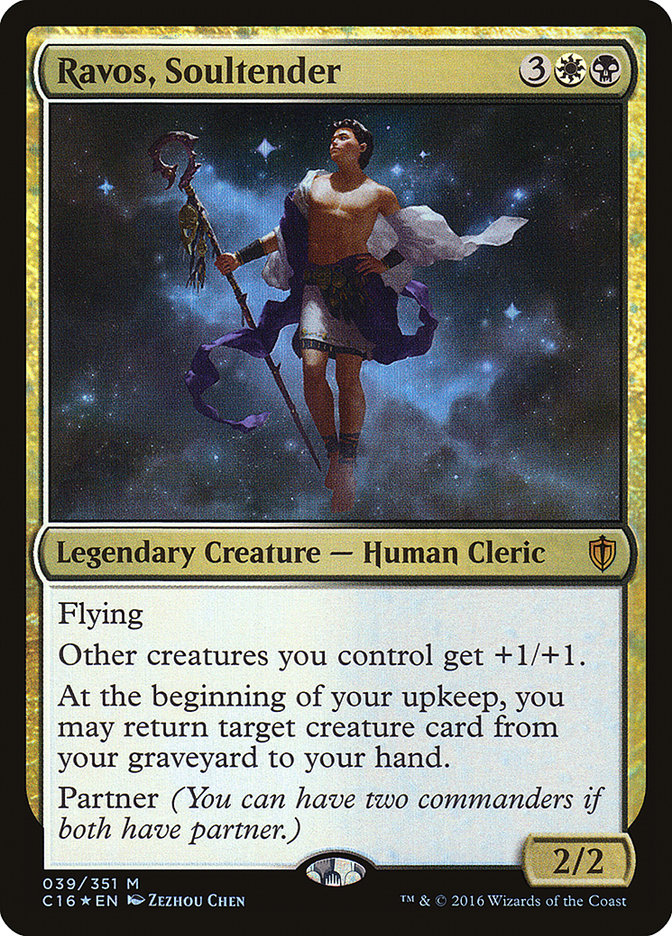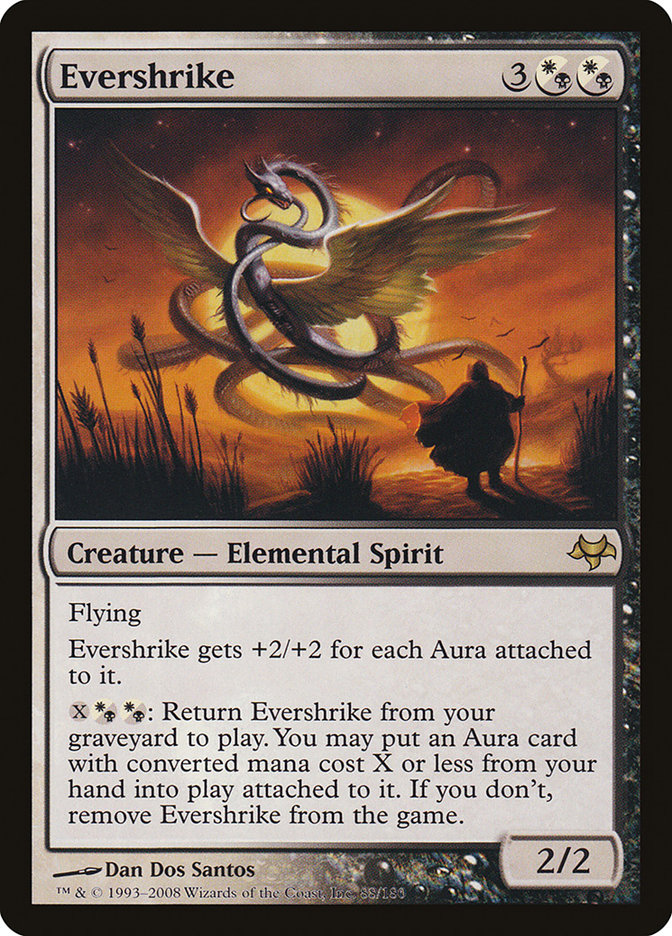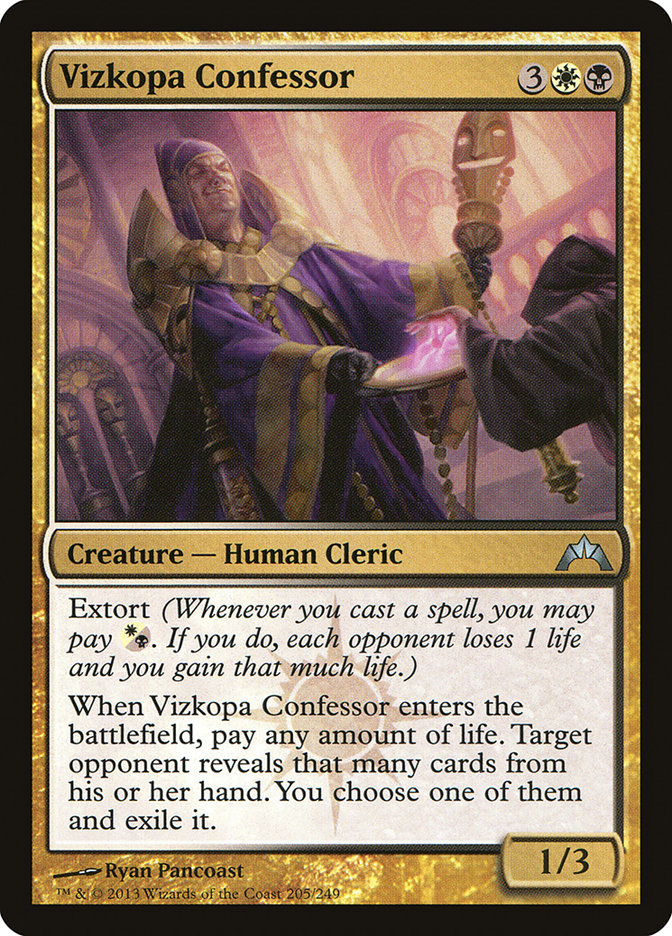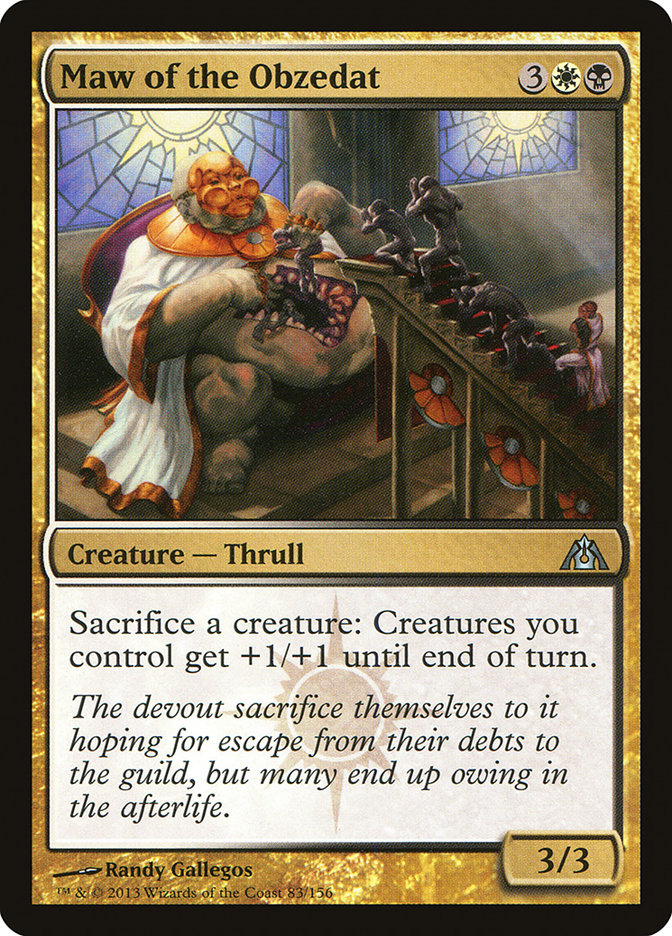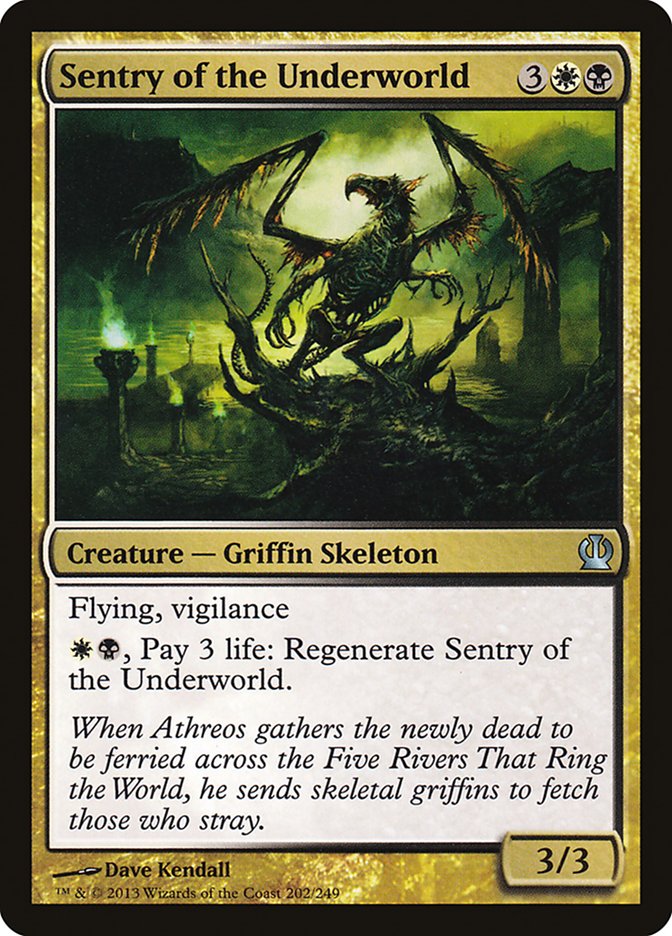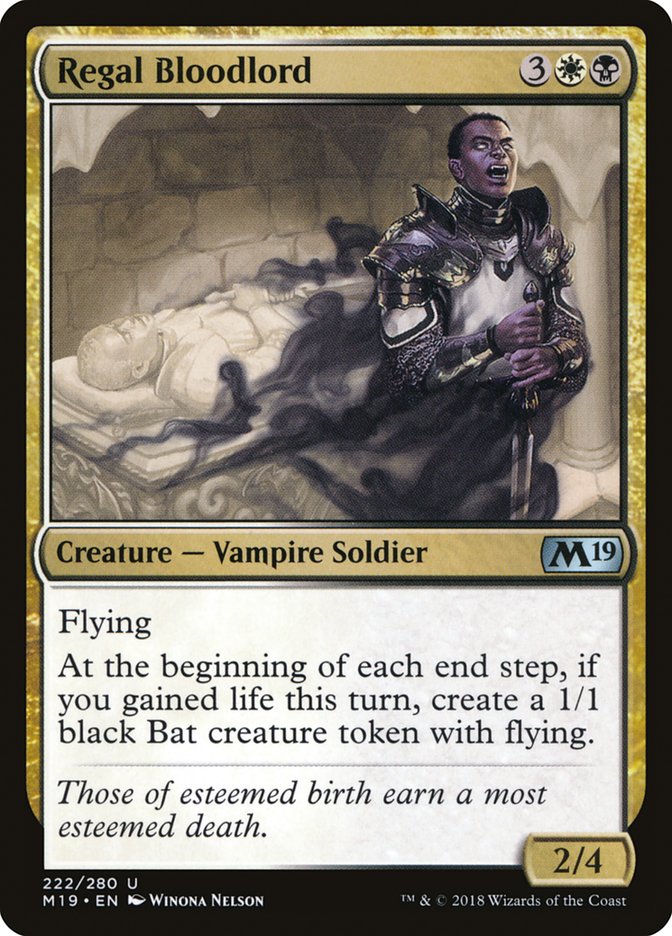Ravos, Soultender MTG Card
| Card sets | Released in 4 setsSee all |
| Mana cost | |
| Converted mana cost | 5 |
| Rarity | Mythic |
| Type | Legendary Creature — Human Cleric |
| Abilities | Flying,Partner |
| Power | 2 |
| Toughness | 2 |
Text of card
Flying Other creatures you control get +1/+1. At the beginning of your upkeep, you may return target creature card from your graveyard to your hand. Partner (You can have two commanders if both have partner.)
Cards like Ravos, Soultender
Ravos Soultender finds its place among legendary creatures in MTG that offer powerful effects from the command zone or within the deck. It draws close comparison to Teysa Karlov, a card that similarly amplifies death triggers of other creatures. While Ravos also provides a static boost to your creatures’ power and the unique utility of recurring a creature from the graveyard to your hand during your upkeep, Teysa doubles the output of any death effect without the recursion.
Another card worth mentioning in this juxtaposition is Karador, Ghost Chieftain. Both enable playing creatures from the graveyard, but Karador allows you to cast one each turn directly, bypassing the need to move it back to your hand. Karador’s benefit lies in potential immediacy and mana savings whereas Ravos can be more versatile, gradually accumulating board presence and synergizing with any graveyard strategy.
To sum up, Ravos Soultender holds its own in the spectrum of reanimator-commanders, appealing for its creature boosting and endurance qualities that encourage a resilient and formidable playstyle in Magic: The Gathering.
Cards similar to Ravos, Soultender by color, type and mana cost
Card Pros
Card Advantage: Ravos Soultender offers a consistent form of card advantage by allowing you to return a creature card from your graveyard to your hand at the beginning of your upkeep. This recursive ability can be a significant boon, making sure you never run out of threats and can keep up the pressure on your opponent.
Resource Acceleration: While the card itself does not directly provide mana acceleration, the ability to reclaim creatures from the graveyard can act as a form of resource acceleration. It ensures that the resources spent on creatures are not wasted, effectively giving you more use out of the creatures you’ve already played.
Instant Speed: Although Ravos Soultender operates at sorcery speed being a creature, its ability to facilitate instant-speed interactions should not be overlooked. By returning creature cards with flash or creatures that can be activated or cast at instant speed, Ravos indirectly allows for more flexible and surprise plays against an opponent.
Card Cons
Discard Requirement: Ravos Soultender requires you to harness the graveyard for card advantage. This mechanic often asks players to make tough choices about what stays in the graveyard versus what returns to hand, potentially restricting play style and strategic depth.
Specific Mana Cost: With a specific mana cost that includes both White and Black mana, Ravos can be tricky to cast in a multicolored deck. This demands a well-tuned mana base to consistently play the card on curve.
Comparatively High Mana Cost: At a total of five mana to cast, Ravos comes at a cost that may sideline the card in high-paced games. In the current meta, decks focus on efficiency, and sometimes a five-mana investment can be too slow, making it a potentially less attractive option for commander players seeking immediate board impact.
Reasons to Include Ravos Soultender in Your Collection
Versatility: Ravos Soultender offers a flexible role in various deck archetypes. Its ability to return creatures from your graveyard to your hand each turn makes it a key piece in value-driven decks, as well as in strategies focused on creature recursion.
Combo Potential: This card synergizes well with strategies that capitalize on sacrificing creatures for gain. When combined with other cards, Ravos can form powerful loops that can out-value and overwhelm opponents.
Meta-Relevance: In a game environment where creature-based strategies are prevalent, Ravos Soultender becomes a resilient threat that can continuously bring back vital creatures, ensuring your board presence and maintaining your advantage.
How to Beat Ravos Soultender
Ravos Soultender presents a unique challenge on the battlefield with its ability to bring back creatures from the graveyard to your hand each upkeep. Dealing with this recursiveness requires targeted removals or exile effects. To counteract Ravos’ influence, consider using cards like Path to Exile or Swords to Plowshares, which can exile it directly, circumventing its tendency to return to the field if it’s simply destroyed. Graveyard hate cards, such as Rest in Peace, can shut down Ravos’ abilities by preventing creatures from hitting the graveyard in the first place. Additionally, utilizing board wipes such as Wrath of God or Damnation can clear the field while Ravos is active, nullifying the advantage of creature recursion. By focusing on interrupting the graveyard-access strategy, players can effectively neutralize Ravos Soultender’s impact and maintain control of the game.
BurnMana Recommendations
Unraveling the depths of MTG strategy with Ravos Soultender at the forefront can be a rewarding experience. Its unique ability to recover creatures from the graveyard provides ongoing advantage, making it a worthy addition to decks that thrive on endurance and recursion. If you’re looking to enrich your strategy and outlast opponents with a persistent board presence, Ravos can be the cornerstone you need. We encourage you to delve further into strategic builds and discover how Ravos can elevate your gameplay. Let’s continue learning together, and harness the full potential of your MTG deck with Ravos as a guide.
Where to buy
If you're looking to purchase Ravos, Soultender MTG card by a specific set like Magic Online Promos and Commander 2016, there are several reliable options to consider. One of the primary sources is your local game store, where you can often find booster packs, individual cards, and preconstructed decks from current and some past sets. They often offer the added benefit of a community where you can trade with other players.
For a broader inventory, particularly of older sets, online marketplaces like TCGPlayer, Card Kingdom and Card Market offer extensive selections and allow you to search for cards from specific sets. Larger e-commerce platforms like eBay and Amazon also have listings from various sellers, which can be a good place to look for sealed product and rare finds.
Additionally, Magic’s official site often has a store locator and retailer lists for finding Wizards of the Coast licensed products. Remember to check for authenticity and the condition of the cards when purchasing, especially from individual sellers on larger marketplaces.
Below is a list of some store websites where you can buy the Ravos, Soultender and other MTG cards:
 BUY NOW
BUY NOW BurnMana is an official partner of TCGPlayer
- eBay
- Card Kingdom
- Card Market
- Star City Games
- CoolStuffInc
- MTG Mint Card
- Hareruya
- Troll and Toad
- ABU Games
- Card Hoarder Magic Online
- MTGO Traders Magic Online
See MTG Products
Printings
The Ravos, Soultender Magic the Gathering card was released in 4 different sets between 2016-11-11 and 2020-11-20. Illustrated by Zezhou Chen.
| # | Released | Name | Code | Symbol | Number | Frame | Layout | Border | Artist |
|---|---|---|---|---|---|---|---|---|---|
| 1 | Magic Online Promos | PRM | 86168 | 2015 | Normal | Black | Zezhou Chen | ||
| 2 | 2016-11-11 | Commander 2016 | C16 | 39 | 2015 | Normal | Black | Zezhou Chen | |
| 3 | 2016-11-16 | Treasure Chest | PZ2 | 59 | 2015 | Normal | Black | Zezhou Chen | |
| 4 | 2020-11-20 | Commander Legends | CMR | 533 | 2015 | Normal | Black | Zezhou Chen |
Legalities
Magic the Gathering formats where Ravos, Soultender has restrictions
| Format | Legality |
|---|---|
| Commander | Legal |
| Legacy | Legal |
| Oathbreaker | Legal |
| Vintage | Legal |
| Duel | Legal |
Rules and information
The reference guide for Magic: The Gathering Ravos, Soultender card rulings provides official rulings, any errata issued, as well as a record of all the functional modifications that have occurred.
| Date | Text |
|---|---|
| 2020-11-10 | An effect that checks whether you control your commander is satisfied if you control one or both of your two commanders. |
| 2020-11-10 | Because damage remains marked on a creature until the damage is removed as the turn ends, nonlethal damage dealt to creatures you control may become lethal if Ravos leaves the battlefield during that turn. |
| 2020-11-10 | Both commanders start in the command zone, and the remaining 98 cards (or 58 cards in a Commander Draft game) of your deck are shuffled to become your library. |
| 2020-11-10 | If something refers to your commander while you have two commanders, it refers to one of them of your choice. If you are instructed to perform an action on your commander (e.g. put it from the command zone into your hand due to Command Beacon), you choose one of your commanders at the time the effect happens. |
| 2020-11-10 | If your Commander deck has two commanders, you can only include cards whose own color identities are also found in your commanders' combined color identities. If Falthis and Kediss are your commanders, your deck may contain cards with black and/or red in their color identity, but not cards with green, white, or blue. |
| 2020-11-10 | Once the game begins, your two commanders are tracked separately. If you cast one, you won't have to pay an additional the first time you cast the other. A player loses the game after having been dealt 21 damage from any one of them, not from both of them combined. |
| 2020-11-10 | To have two commanders, both must have the partner ability as the game begins. Losing the ability during the game doesn't cause either to cease to be your commander. |
| 2020-11-10 | You can choose two commanders with partner that are the same color or colors. In Commander Draft, you can even choose two of the same commander with partner if you drafted them. If you do this, make sure you keep the number of times you've cast each from the command zone clear for "commander tax" purposes. |
